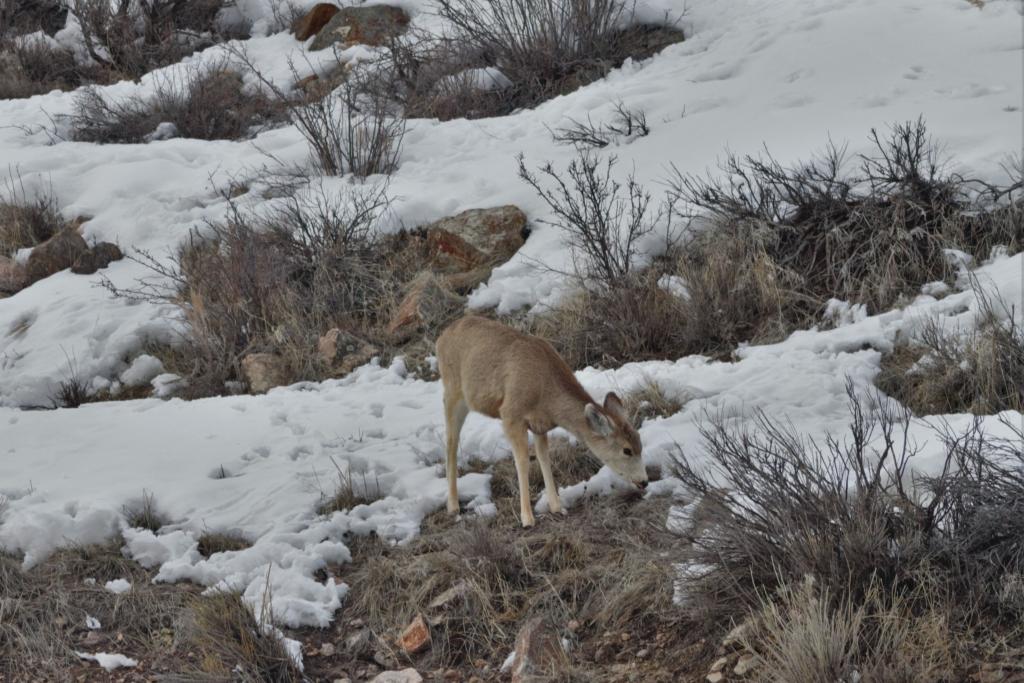CPW talks winter range and wildlife survival in their latest podcast

 Rachael Gonzales
Rachael GonzalesNorthwest Region Public Information Officer
970-773-8587 / [email protected]

Photo Credit: District Wildlife Manager Zach Swennes
Cold temperatures and deep snowpack at higher levels during the winter months push wildlife to lower elevations in search of more favorable living conditions. These areas are known as winter range. They usually have minimum amounts of snow coverage and provide vegetation for food, protection from predators, and shelter from the weather.
Winter range is located all over Colorado. Sometimes these areas are located near populated residential areas, recreational trails, and open space. Because of this, human and wildlife interactions can impact the survival of wildlife during the winter months.
When wildlife feels threatened, they often run to escape the perceived danger, burning calories needed to survive until spring green-up. One of the ways wildlife managers with CPW reduce these interactions is to close wildlife areas with high concentrations of wintering big game to reduce stress caused by interactions with people and dogs. If the location you planned to recreate is closed, do not enter! Remember, these areas have been closed for the protection of wildlife.
Your actions when it comes to wildlife survival are just as important. While food may be scarce, it’s crucial to remember under no circumstance should you ever feed wildlife. Not only is it illegal, but it is also very harmful to their health. Wildlife such as deer and elk have a complex digestive system that is not adapted to handle human food. When people intentionally place or distribute food, salt blocks, and other attractants for wildlife, it can lead to illness, poor body condition, or death.
Want to learn more? Listen to our latest podcast, Conserving Winter Range for Wildlife. In this podcast, Area 9 Wildlife Manager Jeromy Huntington talks about winter range in Colorado and what CPW is doing to conserve these areas.


Photo Credit: District Wildlife Manager Zach Swennes
Colorado Parks and Wildlife (CPW) is an enterprise agency, relying primarily on license sales, state parks fees and registration fees to support its operations, including: 43 state parks and more than 350 wildlife areas covering approximately 900,000 acres, management of fishing and hunting, wildlife watching, camping, motorized and non-motorized trails, boating and outdoor education. CPW's work contributes approximately $6 billion in total economic impact annually throughout Colorado.
DISCLAIMER: The Colorado Parks and Wildlife (CPW) website maintains press releases containing historical information that may no longer be accurate. Press releases are dated, which should be noted to determine whether the information provided is current. Please review our current regulations and brochures for up-to-date information.